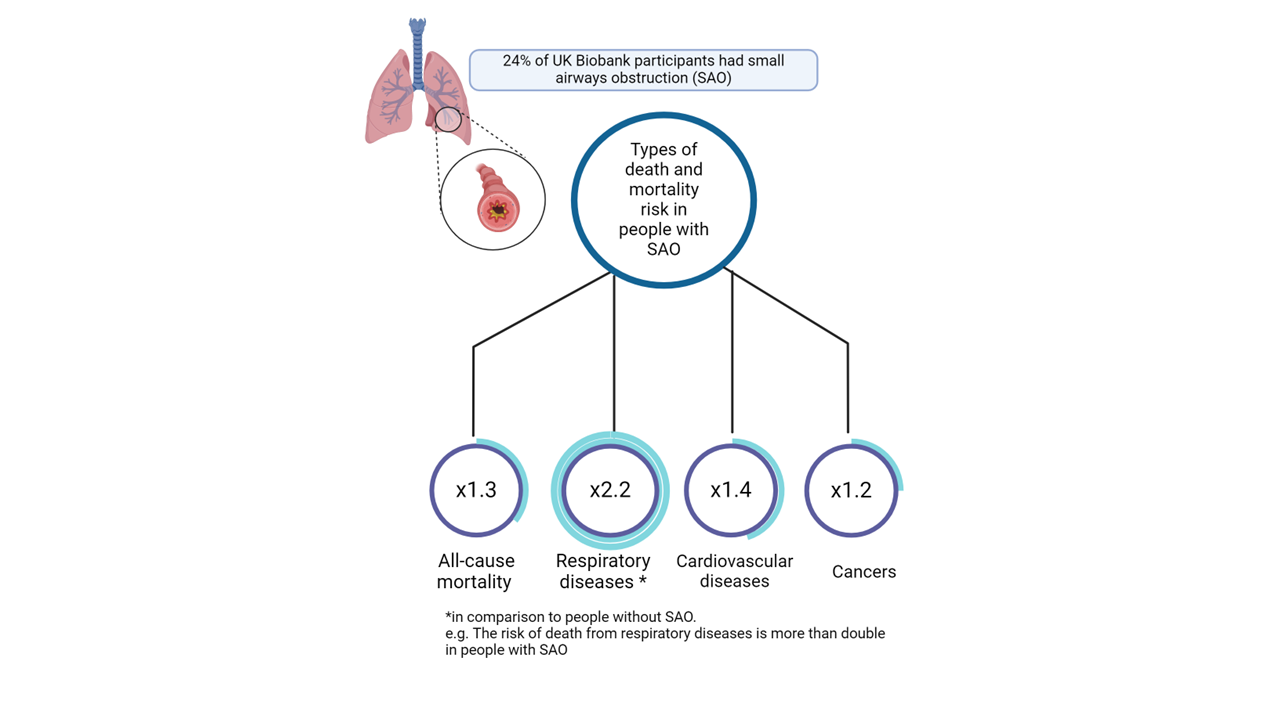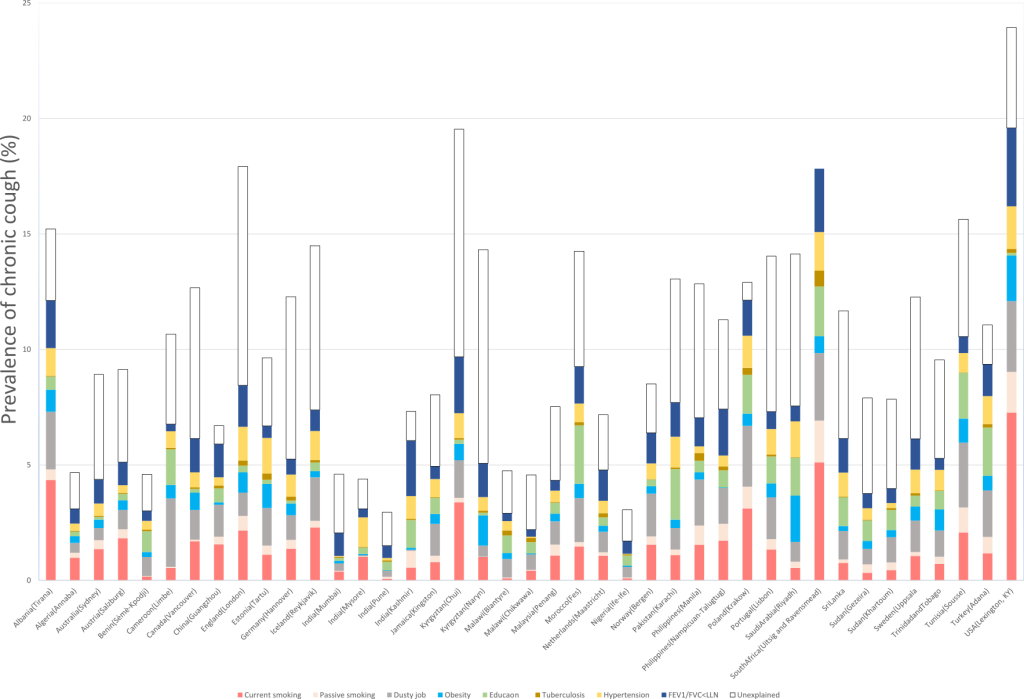Chronic obstructive pulmonary disease (COPD) is a common illness of the lungs, and one of the leading causes of death globally, particularly in the poorest countries in the world. Chronic airflow obstruction (CAO) is a key characteristic of a COPD diagnosis. It is identified using a lung function test called spirometry and reflects a reduction in the flow of air through the airways, which is present even after taking inhaled medication.
In early COPD, inflammatory changes occur in the small airways. These are airways less than 2mm in diameter. Their small size makes it easier for noxious particles and gases, such as tobacco smoke, to collide with their walls, meaning they are particularly susceptible to damage. This presents an opportunity for the early detection and treatment of COPD if lung function tests can be used to identify changes in the small airways before they progress to more severe disease.
Isolated small airways obstruction (SAO) reflects a reduction in the flow of air through the small airways, measured using spirometry. We have previously shown that isolated SAO is common globally, and what’s more, individuals with isolated SAO are more likely to have respiratory symptoms than those with otherwise normal lung function. We have now conducted a further study to investigate whether individuals with isolated SAO are more likely to progress to CAO over time and have a greater decline in lung function than the rest of the population. We used data from 3957 participants of the multinational Burden of Obstructive Lung Disease (BOLD) study. Participants were from 18 sites across the world. At their baseline visit, participants performed spirometry before and after inhalation of a bronchodilator, which is a medication designed to open the airways, and completed a health questionnaire. They repeated the same measurements at a follow-up visit.
After an average of 8 years of follow-up, we found that individuals with isolated SAO were 2 to 3 times more likely to progress to CAO and had lower lung function at follow-up compared to those with normal lung function. This was true in both males and females, even in those who had never smoked. We also found that isolated SAO is better than basic information such as smoking history, age, sex, and body mass index (BMI) to predict future CAO. To confirm these findings, we replicated our research using data from the UK Biobank study and found similar results.
We have shown that using spirometry to assess small airways function can identify those who are at risk of developing COPD, who would be classed as having normal lung function using current criteria. This has implications for the early intervention and prevention of a disease that is associated with significant morbidity and mortality globally.
The manuscript published in BMJ Open Respiratory research is available here: http://dx.doi.org/10.1136/bmjresp-2023-002056
Read Spirometric assessment of the small airways, clinically useful after all? in full


 tory disease. It started with the intention to measure the prevalence, risk factors, and impact of chronic obstructive pulmonary disease (COPD) in different populations around the world. COPD is a common and serious lung condition that causes breathing difficulties, coughing, wheezing, and reduced quality of life. It is estimated that COPD affects around 300 million people worldwide and is a leading cause of death globally.
tory disease. It started with the intention to measure the prevalence, risk factors, and impact of chronic obstructive pulmonary disease (COPD) in different populations around the world. COPD is a common and serious lung condition that causes breathing difficulties, coughing, wheezing, and reduced quality of life. It is estimated that COPD affects around 300 million people worldwide and is a leading cause of death globally.